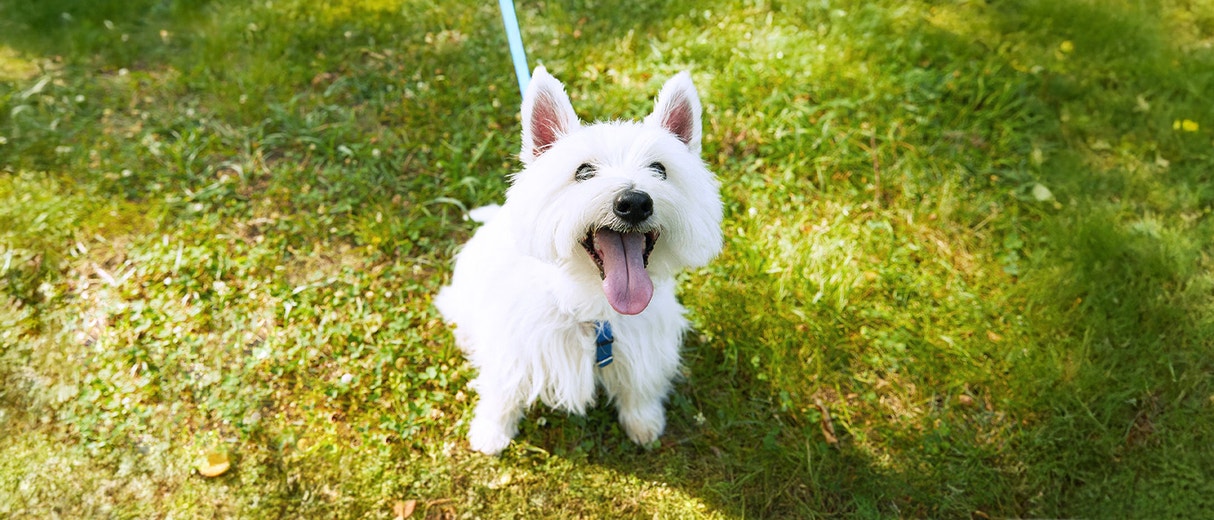
How to Introduce a New Dog to Your Current Dog
You’ve decided to welcome another dog into your fur family — hooray! With many people staying at home, it’s a great time to introduce a new pet to the household.
Although dogs are social animals that tend to love the company of other dogs, there are times when introducing a new dog into the family can be tricky. First impressions are very important, especially if your resident dog is used to being the only dog vying for your attention. Here are a few ways to help your current dog accept your new pup.
How to Prepare for Introducing a New Dog
Prior to bringing your new dog or puppy home, place anything your resident dog might guard in one area. This may include food bowls, bones, beds and toys. Make sure the new dog has a separate area for all of their items. Even if your pet has never been possessive in the past, it’s best to be cautious and avoid putting the dogs in a position to fight over toys or food.
Avoiding clutter is also important; congested areas may trigger aggression between dogs if they feel forced on each other. You may even try using a tall baby gate to keep the dogs’ spaces separated until they’ve had time to get used to each other.
What to Do During the Initial Meeting
For your dogs’ first meeting, secure help from a family member or friend so someone can pay attention to each dog. The meeting should be in a neutral environment like a park. It’s best to avoid introducing the dogs in the house — or even in the yard — where the resident dog may become territorial. Open areas are ideal, as there are a lot of interesting sights and sounds to keep the dogs distracted.
Follow this step-by-step guide for the first meeting:
- Head to the meeting spot with the dogs separately.
- Try bringing the dogs together and let them greet each other. Human escorts must keep the leashes slack so the dogs don’t feel as if they’re being held back.
- Expect the dogs to sniff, circle, play, urinate or simply ignore each other. Let them do what they want to establish a relationship — with as little mediation from the owner as possible.
- If the animals try to fight, it’s time to intervene. But don’t pull the dogs away by the leash. Instead, wave a CESAR® Meaty Bites treat over or in front of the dogs’ noses to lure them away from each other.
- Keep the initial interaction brief. After the dogs meet, try going for a short walk together.
If the walk together goes well, your dogs may be ready to meet on home turf.
Advice for Bringing Your New Dog Home
After a successful first introduction, your new dog and resident dog can try meeting at home. To do so, start at a neutral location. Walk home with the dogs together and act as though nothing has changed. If you have a yard, let the dogs hang out there for a while as you supervise. When they’re ready, let them in the house.
If your dogs have gotten along well at the park and in the yard, allow the resident dog to be off the leash first. Let the new dog or puppy explore the house on the leash, and if the resident dog demonstrates friendly manners, remove the new pet’s leash as well. If the resident dog displays any aggression or territoriality, it’s best to keep them separated while they adjust.
What to Do During the First Few Weeks
Try to keep your routine as normal as possible. When it’s mealtime, feed the resident dog just like usual. Feed your new dog in a different room, so there’s no stress over food. Keep up your regular walking and playtime schedule, making sure both dogs get plenty of love and attention.
Keep the dogs’ interactions closely supervised for the first two weeks, until both dogs are fully accustomed to each other. Avoid leaving the dogs alone together until you’re sure they’re comfortable with each other. Reinforce positive behavior with lots of treats and pets — treats are a great training tool!
Watch closely for situations that could lead to conflict, such as fighting over toys or becoming overly excited. Be on the lookout for signs either dog is anxious or uncomfortable, such as growling, snapping, showing teeth, back-hunching, long stares and raised fur. If your dog displays these signs, be ready to distract or separate the dogs to avoid conflict and continue monitoring their interactions. Over time, your dogs should learn to tolerate each other, or even become best buddies. If you still run into issues, a professional dog trainer or animal behaviorist may be able to help.
It’s always exciting to welcome a new pet into your family. Following these steps can help ease the transition for your new pup and resident dog.
And, finally, congratulations on your growing family!



